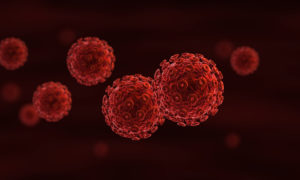
The 27th Conference on Retroviruses & Opportunistic Infections; The London Patient: a Real HIV Cure?
The Conference on Retroviruses and Opportunistic Infections (CROI) is widely recognized as the leading research conference for HIV Disease. The conference features the most cutting-edge clinical research as well as laboratory-based research and epidemiology. The research accepted for presentation must meet the highest standard for quality of the work and it’s relevance to the field.
This year, the 26th CROI was held from March 4-7th in Seattle, Washington. The next three articles in the series will bring you some updates on what we have learned from the conference. With over 1000 presentations, what I present will barely be the tip of the iceberg, but hopefully, you will find the reports interesting and some may even be helpful.
One of the most anticipated research reports to emerge from the Conference is the case of an HIV patient that is potentially “cured” of AIDS, known as the “London patient”. The presenter of this case was Dr. Ravindra Gupta based at University College London in the UK. This case is also very similar in many ways to the other famous cure case, the Berlin Patient.
The case is a complicated one and there are many variables that could be related to the outcome. We also must use the word “cure” very cautiously because that has not been established yet, and furthermore, the scientific community has not clearly established what constitutes a cure. So let's try to get through this.
The patient was diagnosed with HIV in 2003 and began HIV treatment soon after. About 10 years later, in 2013, he was diagnosed with Hodgkin’s Lymphoma, stage IVb, an advanced stage of cancer that is sometimes seen in patients with HIV infection. Hodgkin’s Disease (Hodgkin’s Lymphoma) is oftentimes a curable cancer, but in this case, the disease is diagnosed at an advanced stage. Treatment of this cancer requires multiple strategies, any of which could affect HIV disease.
First of all, treatment of this cancer required a stem cell transplant (allogeneic stem transplant). Stem cells are the source of our infection-fighting cells in the body. Blood cells are collected from a matched donor and the stem cells are separated. Then, radiation or chemotherapy is used to kill the cancerous blood cells in the patient and increase chances the donated cells will be accepted.
The patient then receives the donated cells. It is most important to understand that the person who donated the cells to this patient had a genetic modification of a protein that HIV uses to infect cells. This protein is called CCR5 and the virus must attach to this protein on the outside of the cell in order to enter and infect the cell. Because of the altered structure of this protein, due to a genetic mutation present in about 1% of Europeans, the virus cannot attach and infect the lymphocyte.
So now, this patient’s blood cells have been replaced with cells that are resistant to HIV infection. The HIV drug Maraviroc (Selzentry) essentially works the same way as this genetic mutation by blocking CCR5 and preventing HIV from infecting cells.
The treatment of the cancer also involved some courses with cancer chemotherapy before the donor cells are administered. The use of these cancer drugs may also have played an important role. Cancer chemotherapy can be toxic to blood cells. However, in this case, it could have possibly been helpful in eliminating cells harboring latent HIV virus, known as the reservoir (See article Why we haven’t cured HIV Infection).
Indeed when the researchers performed special tests to produce virus from the reservoir, no virus was produced; a good sign that the reservoir was eliminated. The transplant required immunosuppressive medicines to keep the patient from having a reaction and rejecting the transplanted blood cells.
So through the very complicated process of treating the London patient’s cancer, a “new” immune system was created by the stem cell transplant that is resistant to HIV, in a patient where it appears the reservoir was eliminated. About 14 months after the marrow transplant, the HIV medicines were stopped.
The patient has been in remission from the cancer and has been off HIV medicines for over 18 months with no virus detected anywhere. In addition to not finding any virus hiding in the body, the patient has no antibodies to HIV, which further supports there is no virus hiding out in the body.
Many aspects of this case were seen in the Berlin patient, Timothy Brown. This patient was suppressed on HIV therapy for many years but then developed Acute Myelogenous Leukemia (AML). Treatment of this cancer also required stem cell transplantation. The patient also received cancer chemotherapy. When the cancer returned several months later, a second transplant was needed and the patient received radiation therapy.
The donor of the stem cells in both of the transplants for this patient was selected for the mutation to CCR5 that made his lymphocytes resistant to HIV infection. The leukemia was cured after the second treatment. This patient has been off HIV meds with no virus detectable in any part of the body for over 10 years.
Important similarities link these two cases. It is critically important that the stem cells they received came from donors with the mutation in the CCR5, protecting these cells form HIV infection. There are other aspects of these cases that probably relate to the outcomes, such as the use of cancer chemotherapy and radiation that may have eliminated HIV from hiding in cells and tissues, but also the use of immunosuppressive medicines to keep the transplanted cells from being rejected may have somehow contributed.
What should be emphasized here is that the procedures these patients went through can be risky and potentially dangerous and were undertaken to save these men from their cancers. Thankfully, their medical teams were successful in doing that and also possibly curing their HIV infection.
These procedures are not recommended in any way for routine treatment of HIV. But these cases do shed light on possible ways that we could successfully target the virus and hopefully cure the infection and may lead us to methods that can be used more widely and safely. At least these cases teach us that the virus is NOT invincible. You may also want to read about the potential of “functional cures” of HIV in my article “On World AIDS Day, Is there a Cure in Sight?
The next article will bring some more findings from CROI 2019.
 Dr. Crawford has over 25 years of experience in the treatment of HIV. While at Howard University School of Medicine, he worked in two HIV-specialty clinics at Howard University Hospital. He then did clinical research as a visiting scientist with the AIDS Clinical Trials Group (ACTG) at Johns Hopkins University School of Medicine. He served as the Assistant Chief of Public Health Research with the Military HIV Research Program where he managed research studies under the President’s Emergency Plan for AID Relief (PEPFAR) in four African countries.
Dr. Crawford has over 25 years of experience in the treatment of HIV. While at Howard University School of Medicine, he worked in two HIV-specialty clinics at Howard University Hospital. He then did clinical research as a visiting scientist with the AIDS Clinical Trials Group (ACTG) at Johns Hopkins University School of Medicine. He served as the Assistant Chief of Public Health Research with the Military HIV Research Program where he managed research studies under the President’s Emergency Plan for AID Relief (PEPFAR) in four African countries.
He is currently working in the Division of AIDS in the National Institutes of Health. He has published research in the leading infectious diseases journals and serves on the Editorial Board of the journal AIDS. Any views and perspectives in his articles on blackdoctor.org are not representative of any agency or organization but a reflection of his personal views.








